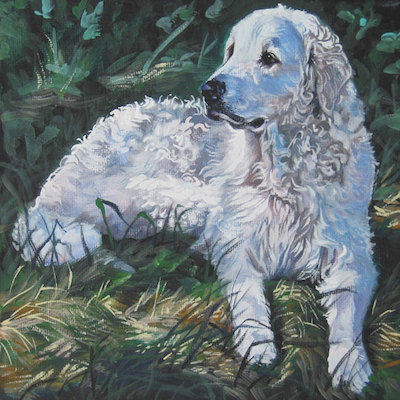
Livestock Guardian Breeds are fascinating in and of themselves, but when one small country has two of them, and both are white, it can be puzzling.
Hungary’s Komondor and Kuvasz are of similar size, coloring and function, and while there are a lot of things that breed historians want to know about these two, one point of particular interest is how they stayed separated over hundreds of years.
The answer lies in the people who settled into Hungary. There is nothing straightforward about the history of this land or its people, so any thorough explanation is necessarily lengthy. Our purposes here preempt the kind of time or space the subject deserves, however, so we must be brief.
The Cumans were a steppe people of Eurasian origin who arrived in Hungary in the thirteenth century after fleeing from the Mongols. Early Magyars were already there, having arrived from the east in the 9th century.
And here is where the proverbial games begin. Some believe the Komondor was the dog of the Cuman, others believe it was created by the Magyars, and a third group think it was brought by the Huns. There is even debate over the origin of the breed’s name. Some say Komondor means “Cuman’s Dog.” Others say the breed’s name literally translated from Magyar means, “Serious Talking, Leader Dog.”
People like to argue over the Kuvasz’s name, as well. There are those who say the name comes from the Turkish word, “kawasz,” which means, “Armed guard of the nobility. Others claim it comes from the Magyar, “ku assa,” or “Dog of the Horse.” Any disputes over origins were likely settled by recent archeological finds in Hungary that found dog bones from the 9th Century to be virtually identical to the modern day Kuvasz. Certainly we know that the Kuvasz was with the Magyarok under the rule of King Arpad in 895 A.D.
But we’ve digressed. The Magyarok and the Cuman lived in separate areas of Hungary, and rarely, if ever, mixed. Since they didn’t mix, their dogs didn’t mix, and over time, the Komondor became a dog seen most often in the rural countryside where it guarded livestock. Early Magyar shepherds used the Kuvasz much like their ancestors did, but eventually, the Kuvasz became more of a guard dog in town.
This is as simple and short as we could make it.
Image: Kuvasz by LA Shepard/thedoglover
https://www.facebook.com/L.A.ShepardArt
http://fineartamerica.com/art/all/l.a.shepard/all
https://www.etsy.com/shop/TheDogLover
